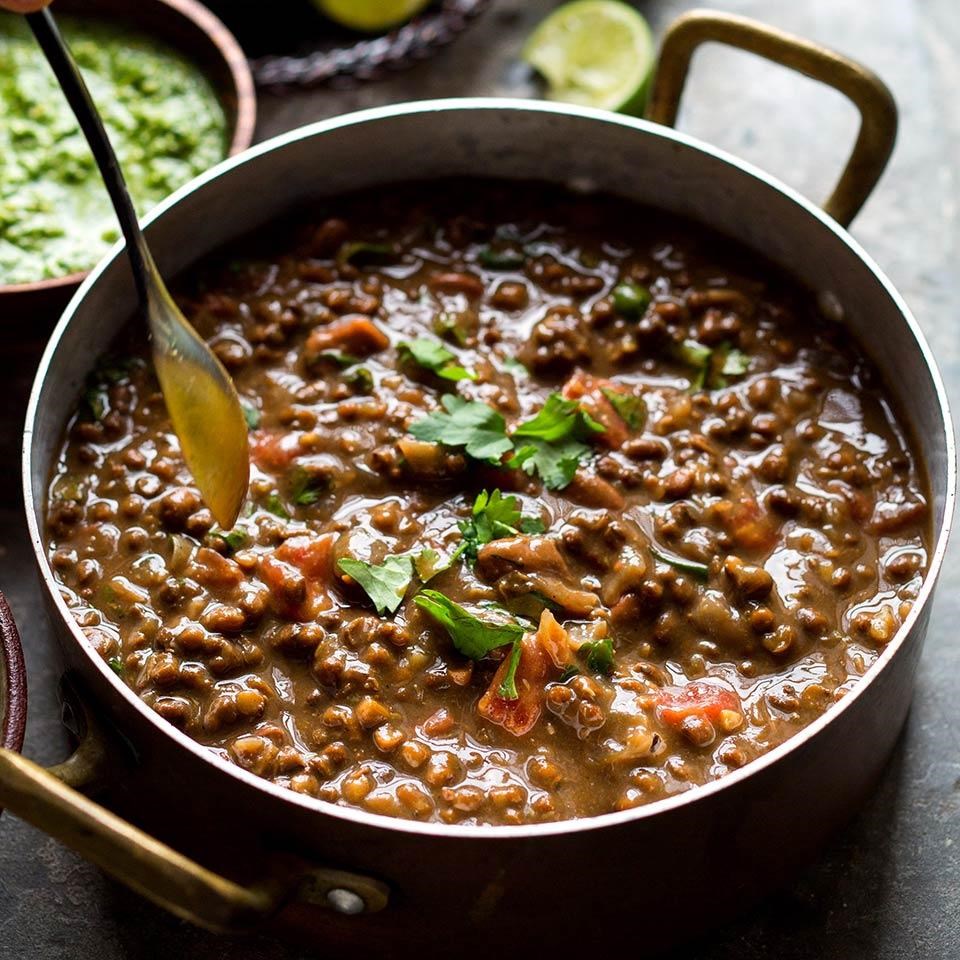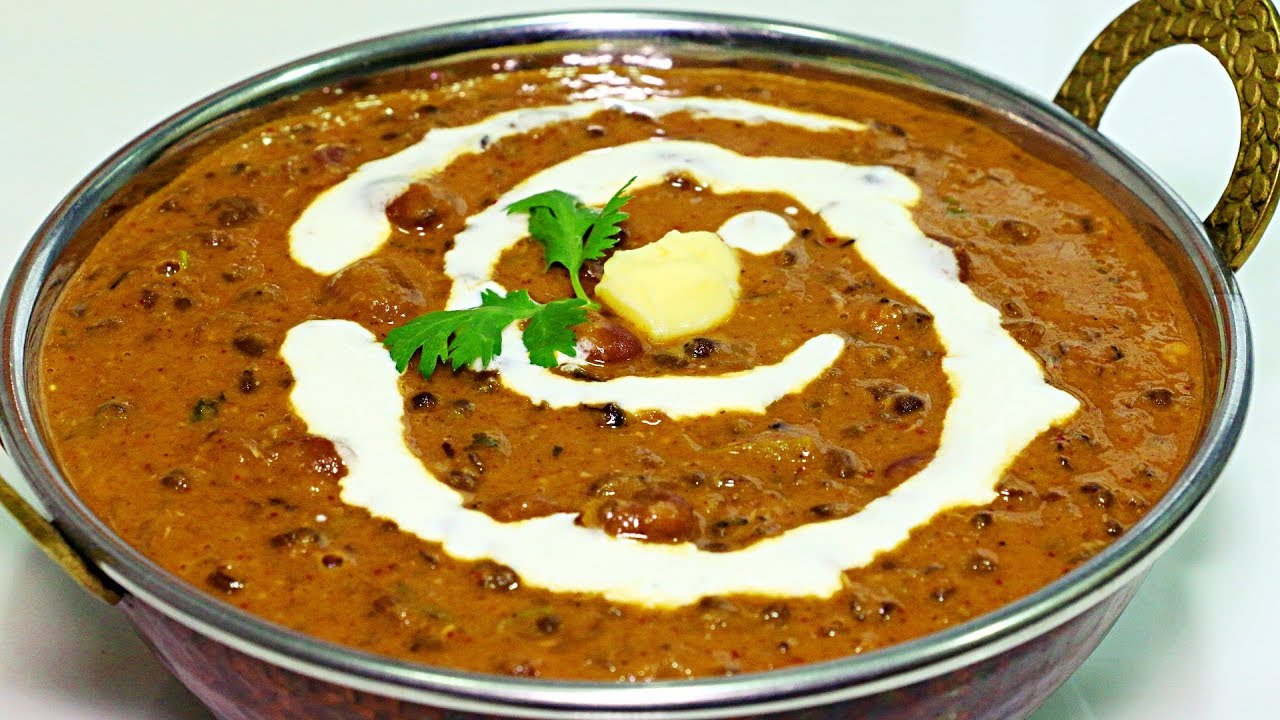In the realm of Indian cuisine, Dal Makhani reigns supreme, a dish that embodies the perfect balance of flavors, textures, and cultural significance. Its name, meaning “black lentils,” hints at the star ingredient that forms the base of this culinary masterpiece.
Dal Makhani is a symphony of flavors, a harmonious blend of lentils, spices, and aromatic ingredients that come together to create a dish that is both comforting and sophisticated.
Dal Makhani is not merely a meal; it is a culinary journey that takes you through the diverse regions of India, each with its unique take on this beloved dish. From the bustling streets of Delhi to the vibrant markets of Punjab, Dal Makhani is a testament to the rich tapestry of Indian culture and its culinary traditions.
Ingredients and Their Significance
Dal Makhani is a hearty and flavorful dish that showcases the perfect balance of flavors and textures. The combination of lentils, kidney beans, and spices creates a rich and creamy dish that is both comforting and satisfying. Let’s delve into the ingredients and their nutritional value, exploring how they contribute to the unique taste and texture of Dal Makhani.
Lentils
Lentils are the heart of Dal Makhani, providing a rich source of plant-based protein, fiber, and essential nutrients. They are low in fat and calories, making them a healthy addition to any diet. The slow-cooking process breaks down the lentils, creating a creamy and velvety texture that is the hallmark of Dal Makhani.
Kidney Beans
Kidney beans add a distinct flavor and texture to Dal Makhani. They are a good source of protein, fiber, and antioxidants. Their slightly sweet and nutty flavor complements the lentils perfectly, while their firm texture provides a delightful contrast to the creamy lentils.
Spices
The spices used in Dal Makhani are carefully selected to create a harmonious blend of flavors. Cumin, coriander, and garam masala are essential spices that add warmth, depth, and complexity to the dish. Ginger, garlic, and green chilies provide a hint of spice and freshness, while tomatoes add a touch of acidity and sweetness.
Butter and Cream
Butter and cream are often added to Dal Makhani to enhance its richness and creaminess. While they are not essential ingredients, they add a luxurious touch to the dish. Butter adds a nutty flavor, while cream provides a velvety texture and helps to balance the spiciness of the dish.
Variations and Adaptations
Dal Makhani is a versatile dish that can be adapted to suit different regional preferences and dietary restrictions. Here are some popular variations and adaptations:
Different Types of Lentils
In addition to black lentils, Dal Makhani can be made with other types of lentils, such as brown lentils or a mix of lentils. Brown lentils have a milder flavor and cook faster than black lentils, while mixed lentils add a variety of textures and flavors to the dish.
Additional Vegetables
Vegetables such as spinach, carrots, bell peppers, and peas can be added to Dal Makhani for extra nutrition and flavor. These vegetables should be added towards the end of the cooking process to retain their texture and nutrients.
Alternative Cooking Methods
Dal Makhani can be cooked using a slow cooker or pressure cooker for a more hands-off approach. Slow cookers allow the lentils to cook slowly and evenly over a long period of time, resulting in a tender and flavorful dish.
Pressure cookers can significantly reduce the cooking time, making them a convenient option for busy weeknights.
Serving Suggestions and Accompaniments
Dal Makhani is a versatile dish that can be served as a main course or as a side dish. It is traditionally paired with rice, naan, or roti, but it can also be served with other grains or breads. Dal Makhani can also be used as a filling for samosas or pakoras.
Main Course
When served as a main course, Dal Makhani is typically accompanied by rice or naan. The rice or naan can be used to soak up the flavorful sauce. Dal Makhani can also be served with a side of yogurt or raita to help cool the palate.
Side Dish
When served as a side dish, Dal Makhani can be paired with a variety of dishes, such as grilled meats, fish, or vegetables. It can also be served with a salad or soup. Dal Makhani is a great way to add flavor and protein to any meal.
Condiments and Garnishes
Dal Makhani can be garnished with a variety of herbs and spices, such as cilantro, cumin, or garam masala. It can also be served with a dollop of yogurt or raita. Lemon wedges can be served on the side to add a bit of acidity.
Presentation
Dal Makhani can be served in a variety of ways to create a visually appealing presentation. It can be served in a traditional Indian bowl or in a more modern serving dish. Dal Makhani can also be garnished with fresh herbs or flowers to add a pop of color.
Health Benefits and Dietary Considerations

Dal Makhani is not just a culinary delight but also a nutritional powerhouse. This wholesome dish offers an array of health benefits due to its rich composition of essential nutrients.
Dal Makhani is an excellent source of protein, making it a valuable option for vegetarians and vegans seeking plant-based protein sources. The combination of lentils and kidney beans provides a complete protein profile, supplying all the essential amino acids required by the body.
Dietary Fiber
Dal Makhani is a rich source of dietary fiber, which plays a crucial role in maintaining a healthy digestive system. Fiber helps regulate bowel movements, preventing constipation and promoting overall gut health. It also aids in controlling blood sugar levels by slowing down the absorption of glucose into the bloodstream.
Iron and Folate
Dal Makhani is an excellent source of iron, a vital mineral that helps carry oxygen throughout the body. It is particularly beneficial for individuals prone to iron deficiency, such as pregnant women, menstruating women, and people with certain medical conditions.
Additionally, Dal Makhani provides folate, which is essential for cell growth and development, especially during pregnancy.
Low in Fat and Cholesterol
Dal Makhani is naturally low in fat and cholesterol, making it a heart-healthy choice. It is an ideal meal for individuals with high cholesterol or those looking to maintain a healthy heart.
Suitable for Various Dietary Preferences
Dal Makhani is a versatile dish that can be easily adapted to suit various dietary preferences and restrictions.
- Vegetarian and Vegan: Dal Makhani is naturally vegetarian and can be easily made vegan by omitting the ghee or butter. Simply substitute it with a plant-based cooking oil.
- Gluten-Free: Dal Makhani is inherently gluten-free, making it a suitable option for individuals with celiac disease or gluten intolerance.
- Low-Sodium: To make Dal Makhani low-sodium, reduce the amount of salt added during cooking. You can also use low-sodium vegetable broth instead of regular broth.
By adjusting the ingredients and cooking methods, Dal Makhani can be tailored to meet specific dietary needs and preferences, making it an inclusive dish that can be enjoyed by a wide range of individuals.
Cultural Significance and History
Dal Makhani holds a special place in Indian cuisine, transcending regional boundaries and becoming a symbol of unity and diversity.
The origins of Dal Makhani can be traced back to the northern Indian state of Punjab, where it is believed to have been created in the kitchens of the royal families. The dish quickly gained popularity among the masses, becoming a staple in Punjabi households and spreading to other parts of the country.
Role in Festivals and Celebrations
Dal Makhani is an integral part of many festivals and celebrations in India. During the harvest festival of Lohri, it is prepared as a symbol of prosperity and abundance. On the occasion of Diwali, the festival of lights, Dal Makhani is served as a symbol of wealth and good fortune.
It is also a popular dish during weddings and other special occasions, signifying happiness and togetherness.
Everyday Meals and Regional Variations
In everyday meals, Dal Makhani is a comforting and nutritious dish that is often paired with rice, roti, or naan. Regional variations of Dal Makhani exist, each influenced by local tastes and traditions. In Kashmir, a version called Rogan Josh Dal Makhani is prepared with lamb or goat meat, while in Uttar Pradesh, a sweeter version is made with jaggery or sugar.
In the southern state of Kerala, a coconut-based version of Dal Makhani is popular.
Last Word

Dal Makhani is more than just a recipe; it is a culinary experience that captivates the senses and leaves a lasting impression. Its versatility and adaptability make it a dish that can be enjoyed by people from all walks of life, regardless of dietary preferences or cultural backgrounds.
Whether you are a seasoned cook or a novice in the kitchen, Dal Makhani is an invitation to explore the depths of Indian cuisine and create a dish that will become a staple in your culinary repertoire.
FAQs
What is the secret to achieving the perfect texture and consistency in Dal Makhani?
The key to achieving the perfect texture and consistency lies in the slow and gentle simmering process. Simmer the lentils for at least an hour, or until they are tender and creamy. Avoid boiling the lentils, as this can make them mushy and lose their distinct texture.
Can I use different types of lentils for Dal Makhani?
Yes, you can use different types of lentils for Dal Makhani. Black lentils are the traditional choice, but you can also use brown lentils, green lentils, or a mix of different lentils. Each type of lentil will impart a slightly different flavor and texture to the dish.
How can I make Dal Makhani suitable for a vegetarian or vegan diet?
To make Dal Makhani suitable for a vegetarian or vegan diet, simply omit the ghee or butter and use vegetable oil instead. You can also use a plant-based yogurt or sour cream as a garnish.
What are some common accompaniments to Dal Makhani?
Dal Makhani is commonly served with rice, naan, or roti. It can also be served with a side of yogurt, raita, or chutney. For a more complete meal, you can serve Dal Makhani with a vegetable dish such as aloo gobi or chana masala.
